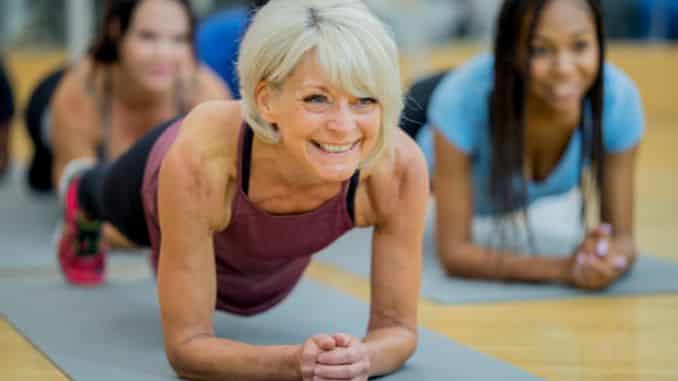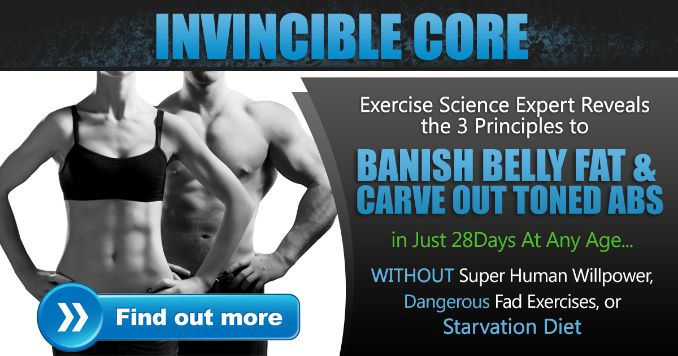If you’re looking to build a truly strong core, you’ve come to the right place! A strong core isn’t just about showing off six-pack abs—it’s about improving stability, balance, and strength for your entire upper body. Whether you’re dealing with a weak core or just starting your fitness journey, incorporating core exercises for beginners can be a game changer. From forearm planks to side planks and bird dog movements, these exercises target multiple muscles, including deep core muscles, back muscles, and glutes, helping you move with ease and confidence.
In this blog, I’ll guide you through the best exercises to begin building core strength [1], focusing on proper form, core engagement, and avoiding common mistakes. You’ll start with fundamental movements like the high plank and bird dog, then gradually progress to more dynamic exercises such as weighted side planks and hanging knee raises. By the end, you’ll have a complete routine of core exercises for beginners that strengthens your entire core while allowing you to advance at your own pace. Let’s get started!
Best Core Exercises for Beginners (Step-by-Step)
1. Forearm Plank
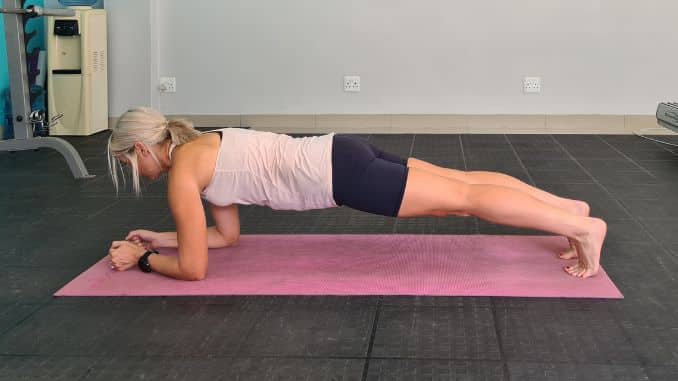
- Begin in a forearm plank position, maintaining good alignment with your head, shoulders, hips, and toes. Tighten your abdominal muscles. Hold this position for several deep belly breaths, in through your nose and out through your mouth
Tip: If this feels too intense, perform it against a wall to reduce the strain.
2. Forearm Wall Plank 1
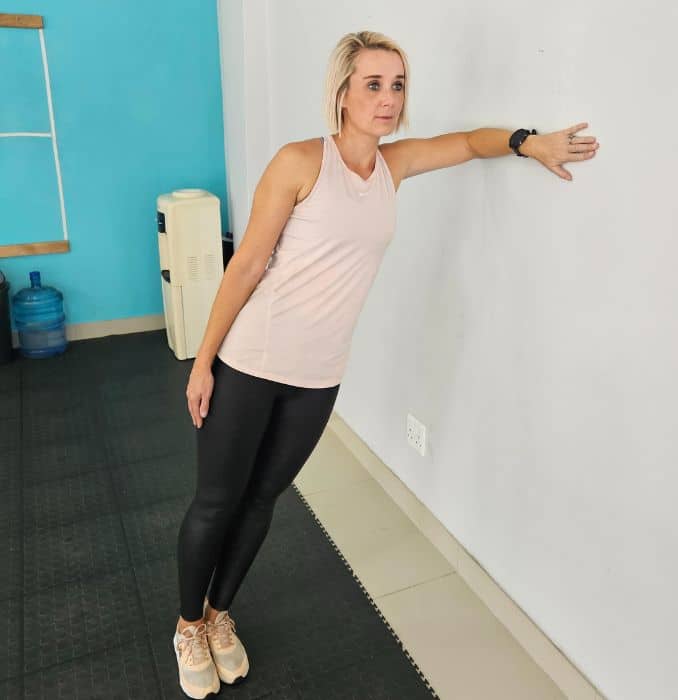
This low-impact exercise is great for those who avoid floor exercises while building core strength.
- Begin in an upright standing position beside a wall with your feet close together, maintaining good alignment with your head, shoulders, hips, and legs. Place your arms at your side. Engage your core. Move your feet back while pressing your forearms against the wall to create an inclined position. Hold the position for several deep belly breaths, in through your nose and out through your mouth. Relax and repeat the movement on the opposite side.
3. Forearm Wall Plank with Leg Raise

- Begin in an upright standing position beside a wall with your feet close together, maintaining good alignment with your head, shoulders, hips, and legs. Place your arms at your side. Press your forearm on the wall and move your feet further away from the wall to increase the angle of your body to an inclined position.
- Engage your core and raise one leg upward. Hold the position for several deep belly breaths, in through your nose and out through your mouth. Relax and repeat the movement on the opposite side.
4. Hip Thrust
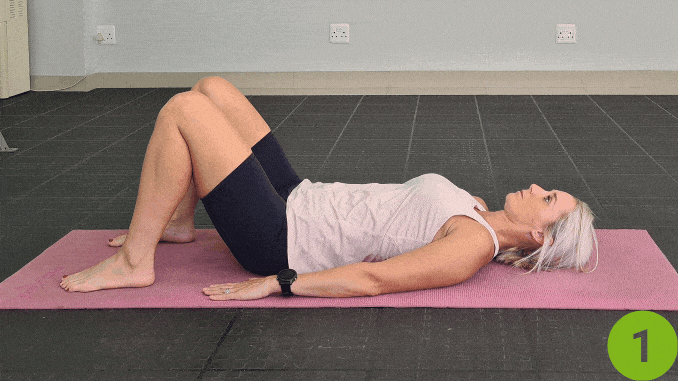
This move strengthens your glutes, lower back, and core.
- Lie on your on the floor with your knees bent and your feet flat, relaxing your upper body. Place your arms on the sides, fingers flexed toward the heels. Contract your abdominal area.
- Inhale then push from your heels to lift your hips, squeezing your glutes at the end position. Hold this position for several deep belly breaths, in through your nose and out through your mouth. Exhale as you lower your hips to return to the starting position and repeat the movement. Complete 10–12 repetitions.
5. Alternating Supermans

This exercise improves body awareness and coordination.
- Lie prone on the floor, with your hands underneath your shoulders and your knees underneath your hips. Contract your abdominal area.
- Take a deep breath and lift one arm to align with your shoulder as you extend your opposite leg behind your body. Hold the position for several deep belly breaths, in through your nose and out through your mouth. Relax and repeat the movement on the opposite side.
6. Mountain Climbers

- Begin in a straight arm plank position, maintaining good alignment with your head, shoulders, hips, and toes. Tighten your abdominal muscles. Bend one knee and lift to chest height.
- Step back to the plank position and repeat the movement with your opposite knee. Repeat the movement, alternating knees in a climbing motion. Complete 10 repetitions.
For a gentler version, perform wall mountain climbers at an incline.
7. Long Plank Armpit Touches
- Begin in a straight arm plank position, maintaining good alignment with your head, shoulders, hips, and toes. Tighten your abdominal muscles and ouch your right armpit with your left hand.
- Return to the starting position and repeat the movement on the opposite side. Alternately
8. Soft Planks with Gliders
Use fitness sliders for your workout. If you don’t have them, no worries—just grab a pair of socks or towels and use them on a smooth, slippery surface. For a step-by-step demonstration, check out this video guide!
- Begin in a forearm plank position with your arms below your shoulders and your legs straight, maintaining good alignment with your head, shoulders, hips, and toes. Place fitness gliders on both feet. Tighten your abdominal muscles. Slide back and forth while maintaining core engagement. Repeat the movement with 10 repetitions.
9. Bird Dog
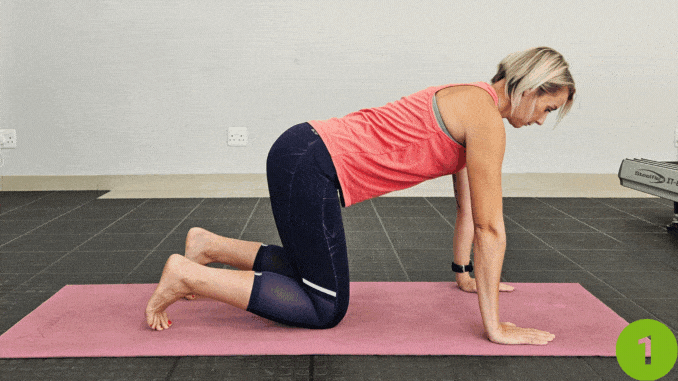
This exercise enhances balance and stability while engaging multiple core muscles.
- Begin in a 4-point position, with your hands underneath your shoulders and your knees underneath your hips. Contract your abdominal area.
- Take a deep breath and lift one arm to align with your shoulder as you extend your opposite leg behind your body. Keep your hips and shoulders parallel to the floor.
- Exhale to bring your elbow towards your bent knee, maintaining a neutral spine throughout as you slowly drop your head towards your chest. Repeat the movement on the opposite side. Complete 10 repetitions on each side.
Dr. Kristie Ennis, a Doctor of Physical Therapy, emphasizes the importance of engaging the deep core muscles to enhance stability and strength. She recommends exercises such as the bird dog, which involves extending the opposite arm and leg while maintaining a neutral spine, to effectively target these muscles. Dr. Ennis advises that proper form and controlled movements are crucial to prevent injury and maximize benefits. She also highlights the significance of integrating core exercises into a regular fitness routine to support overall functional movement and reduce the risk of back pain.
10. Bicycle Crunches
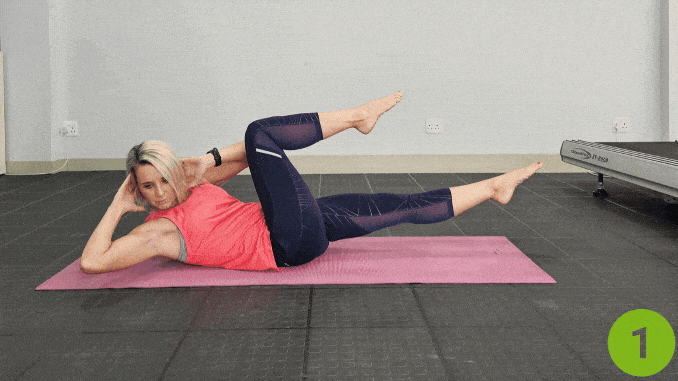
- Lie on your back with your knees bent and feet flat on the floor. Place your hands by your ears or interlace your fingers behind your head. Raise your knees to a 90-degree angle. Engage your core and twist your upper body to one side as you bring your bent knee towards your opposite elbow.
11. Hand Plank
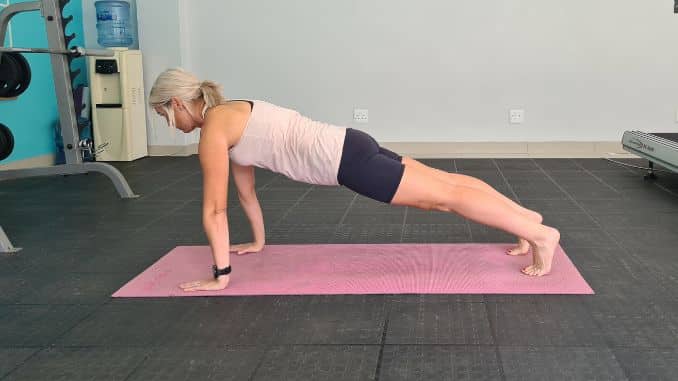
- Begin in a straight-arm plank position, maintaining good alignment with your head, shoulder, hips, and toes, squeezing your butt, thigh, and abs. Hold the position for several deep belly breaths, in through your nose and out through your mouth.
12. Rocking Crunch
- To begin the best exercises for core strength. Lie on your back on the floor with your knees bent your feet flat on the floor. Move your heels closer to your seat. Straighten your arms out at your sides. Contract your core and slightly lift your upper body, pulling your abdominal muscles tight.
- Rock your upper body to one side, reaching the side of your foot with your hand. Return to the starting position and repeat the movement on the opposite side.
13. Side Plank
- Begin in a four-point position, with your knees under your hips and your hands beneath your shoulders. Contract your core and move into a side plank position on your elbow, maintaining good alignment with your head, shoulders, hips and legs.
- Extend your other arm up toward the ceiling. Hold this position for 10 seconds. Relax and repeat the movement on the opposite side.
14. Elbow Plank With Leg Raise
- Begin in a four-point position, with your knees under your hips and your hands beneath your shoulders. Move into a forearm plank position, keeping your feet shoulder-width apart and maintaining good alignment with your head, shoulders, hips and toes.
- Contract your core and raise one leg up toward the ceiling. Hold this position for 10 seconds. Relax to return to the starting position and repeat the movement on the opposite leg.
These essential core exercises for beginners will help you maintain an upright posture, improve balance, and reduce the risk of injuries over time. Strengthening your core is key to staying strong and stable. Check out this video guide to follow along and get started!
15. Wall Plank
- Go against the wall on your forearms at whatever angle you can handle or your fitness level. Hold that wall plank.
- To increase the difficulty, increase the incline by stepping your feet away from the wall.
Remember this when doing this great core exercise. When getting into that plank position, your forearms should not be too high because that will put a lot of stress on the shoulder and over activates the trapezius muscle. By bringing your forearms a little bit lower, you ease the stress in the shoulder and neck.
16. Wall Plank from Forearms
- Move from the forearm to the straight arm position and back into the forearm position.
- Keep alternating back and forth. In that position, get your forearms in a good spot, come up onto your hands, and then back down.
Do ten reps. Start with 1 set and see how you feel.
17. Wall Plank with Knees Up and Out
- Move into a wall plank position, bringing your knee up and out to the side, back in, and back down.
- In the forearm position, bring your knee up, out to the side, back in, and down. Before switching, I can alternate sides or do everything on the same side.
This exercise is effective because it helps improve hip stability by engaging the muscles as you lift your knees. Check this video guide for a step-by-step demonstration!
Do 5 to 10 repetitions, starting with 1 set. If that is easy or not challenging at all, you can go through all three exercises multiple times. If it is still easy, you can increase the incline that you are up against the wall.
Why Core Training Matters
Core training [2] goes beyond sculpting a six-pack. A strong core supports your spine, improves posture, and enhances balance and coordination. It also reduces the risk of injury during daily activities and sports. These exercises strengthen deep and superficial core muscles, such as the transverse abdominis, obliques, and rectus abdominis.
Benefits of Core Training:
- Better Posture and Balance
- Reduced Risk of Lower Back Pain
- Improved Athletic Performance
- Enhanced Functional Fitness
- Injury Prevention
Dr. Cedric X. Bryant, President and Chief Science Officer of the American Council on Exercise (ACE), emphasizes the importance of core strength for overall health and daily functionality. He advocates for exercises that engage multiple core muscles simultaneously, such as planks and side planks, which not only target the abdominals but also the back, hips, and pelvis. Dr. Bryant advises that incorporating these exercises into your routine can enhance stability, improve posture, and reduce the risk of back pain. He also highlights the significance of proper form and controlled movements to maximize benefits and prevent injuries.
The Core Muscles
In our quest for a strong and functional body, one cannot overlook the vital importance of core strength.
The entire core is divided into two main categories:
A. Deep
1. Transverse Abdominis (The Deepest Core Muscles)
It helps stabilize the spine and pelvis and is often called the “internal weight belt.” The fibers of this muscle run across the abdomen like a belt.
2. Lumbar Multifidus
A group of small muscles that run along the spine. They help to maintain stability and control of the spinal segments, allowing for proper movement and posture.
3. Pelvic Floor Muscles
Found at the base of the pelvis and provides support to the organs in the pelvic region. They also play a key role in controlling bladder, bowel function, and sexual function.
4. Diaphragm
They play a crucial role in breathing and contribute to core stability.
B. Superficial
1. Rectus Abdominis
Responsible for flexing the trunk and is often associated with having a “six-pack.” The obliques are located on the sides of the abdomen and help with rotation and lateral flexion of the trunk.
2. Internal And External Obliques
Located at the core’s sides, which rotate and bend the trunk.
3. Erector Spinae
This helps to extend the trunk and support the body during lifting.
4. Hip flexors
Play a crucial role in the movement of the hip joint and are frequently activated during actions like walking, jogging, and sitting.
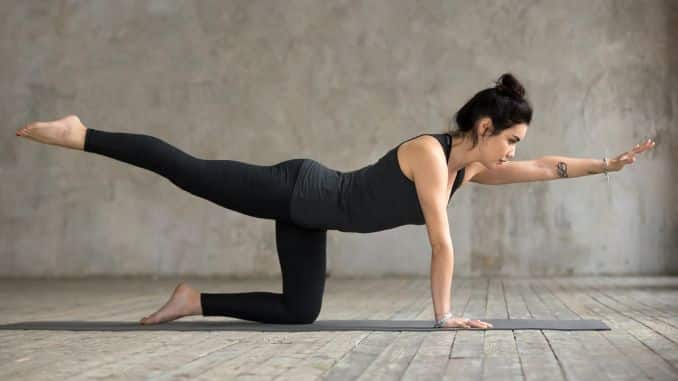
Common Myths About Core Training
Myth 1: Core Exercises Will Give You a Six-Pack
Truth: Core exercises strengthen and tone your muscles, but fat loss requires a healthy diet and overall exercise.
Myth 2: Crunches Are the Best Core Exercise
Truth: Crunches are effective but not the most comprehensive. Functional exercises like planks and bird dogs work more muscles.
Myth 3: You Should Train Core Every Day
Truth: Like any muscle group, your core needs time to recover. Aim for 2–3 sessions per week.
Creating Your Core Workout Routine
Begin with 3–4 exercises from the list above, aiming to complete them 2–3 times per week. Prioritize proper form over intensity to reduce the risk of injury and achieve the best results. As you progress, gradually make your core exercises for beginners more challenging by increasing repetitions, extending hold times, or incorporating more advanced variations.
Remember: Consistency is key. Stick to your routine, and you’ll feel stronger, more balanced, and ready to tackle anything.
Conclusion
Core exercises for beginners don’t have to be complicated. With just a few targeted moves, you can build strength, improve posture, and feel more confident in your body. Whether you prefer floor-based exercises or wall planks, there’s something here for everyone. Start slow, listen to your body, and enjoy the journey toward a stronger, healthier core!
WITHOUT superhuman willpower, dangerous fad exercises, or starvation diets. This is for men or women who want a flatter stomach and toned abs WITHOUT the risk of injury! Check out our Invincible Core now!
FAQs
Are 3 core exercises enough?
Yes, if they target different areas—like upper, lower, and obliques—three exercises can be effective.
What is the number 1 core workout?
The plank is widely regarded as one of the best core exercises for beginners because it activates multiple core muscles simultaneously.
Is it OK to do core every day?
It’s fine if the intensity is moderate, but rest is essential for muscle recovery and growth.
Can I do plank every day?
Yes! Daily planking can improve core strength and stability, but listen to your body to avoid overuse injuries.
How many minutes of core is enough?
10–15 minutes per session, 3–4 times a week, is usually sufficient for results.

